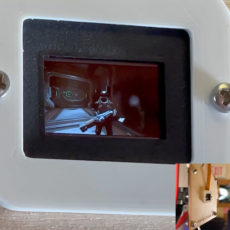
This thumb-sized 3D printer may be small, but something far smaller was used to create the world’s smallest wineglass. Researchers at Stockholm’s KTH Royal Institute of Technology used a nanoscale 3D printer to create this microscopic wineglass using a new method capable of printing devices directly onto the top of an optical fiber as thin as a strand of human hair.

This silica glass-based method can be used for many practical applications in the real world including customized medical machinery lenses for minimally invasive surgery, micro robotics capable of navigating extreme environments, or just filters and couplers for fiber optic networks. Plus, this innovative method drastically cuts down on the energy required to 3D print silica glass, which typically requires heating materials up to several hundred degrees for hours.
- Upgraded PowerBoost 3.0 Firmware: The new PowerBoost 3.0 offers smoother output, increased acceleration, and optimized toolhead efficiency versus the...
- Precise 0.1 mm Detail: Your prints are now more precise than ever thanks to the new ultra-direct extruder and integrated die-cast aluminum alloy...
- 7x7 Auto-Leveling System: Advanced algorithms and a built-in leveling sensor calculate a virtual height map to ensure exceptionally accurate first...

The advantage of our method is there’s no need for thermal treatment and the glass can withstand extreme heat in applications. The concerns when integrating 3D printing methods are usually different for different applications. Even though optimization of our method is still required for different applications, we believe our method presents an important and necessary breakthrough for 3D glass printing to be used in practical scenarios,” said Po-Han Huang, a doctoral student at KTH.







